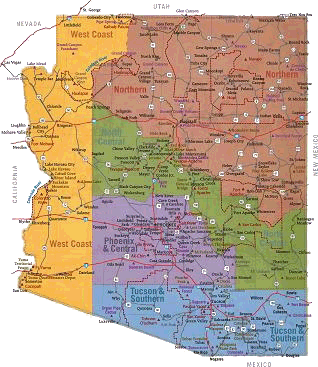Wildlife Viewing in November
Phoenix and Central Arizona
Winter residents have arrived at the Hassayampa Preserve. Cedar waxwing, American robin, and yellow-rumped warbler should be easy ones to mark off your checklist on a visit. Looking for mammals? Arizona has the distinction of hosting all four North American species of skunks, as well as two types of deer (“mulies” and the elegant Coues whitetail). Javelina, raccoons, ringtails and bobcats all call the Preserve home, and may be seen shortly after sunrise. Drive up to Mt. Ord for autumn color in the Fremont cottonwood trees, maybe also big-tooth maples on steep and north-facing slopes of sheltered canyons.
Northern Arizona
Icy lakes and early snow prompt migratory bald eagles to descend on Arizona’s high country to spend the winter, making for some spectacular easy winter wildlife photography. Winter is anything but desolate. Hardy permanent resident birds include white-breasted and pygmy nuthatch, mountain chickadee, Steller’s jay, dark-eyed junco, northern flicker, and acorn, hairy and downy woodpeckers; all of these populate the pine forests and are active throughout the day. In the pinyon-juniper woodlands, American robin, western and mountain bluebirds and whitecrowned sparrows flock to feed on leftover seeds and berries. Townsend’s solitaire can often be found at the tops of large juniper trees, and are often located by their monotone, single-note call before they are seen. Also arriving in winter is the Oregon strain of the dark-eyed junco and house and Cassin’s finches, which can be found in hedgerows, scrubby vegetation and nowleafless willow thickets. Did you realize the Grand Canyon state has badgers? Oval-shaped den openings are a clue to their habitat. Look for activity to/from the dens.
Tucson and Southern Arizona
Most winter species have arrived and duck numbers increase. Wintering hawks, kites, falcons and eagles are numerous in desert fields and agricultural areas. Mountain plovers and ruddy ground doves are more reliable in the Santa Cruz Flats and Sulphur Springs Valley. Sage thrashers and sage sparrows have arrived in the desert scrub alongside scores of red-tailed hawks and sparrow flocks. The first week of November remains a great time for a fall foliage drive to Mt. Lemmon in the Santa Catalina Mountains near Tucson or Mt. Graham near Safford. Aspens and maples above 8,000 feet in these ranges can be as colorful with red and gold leaves as a postcard from New England, and Abert’s squirrels are busy stashing food in preparation for snowy months ahead.














